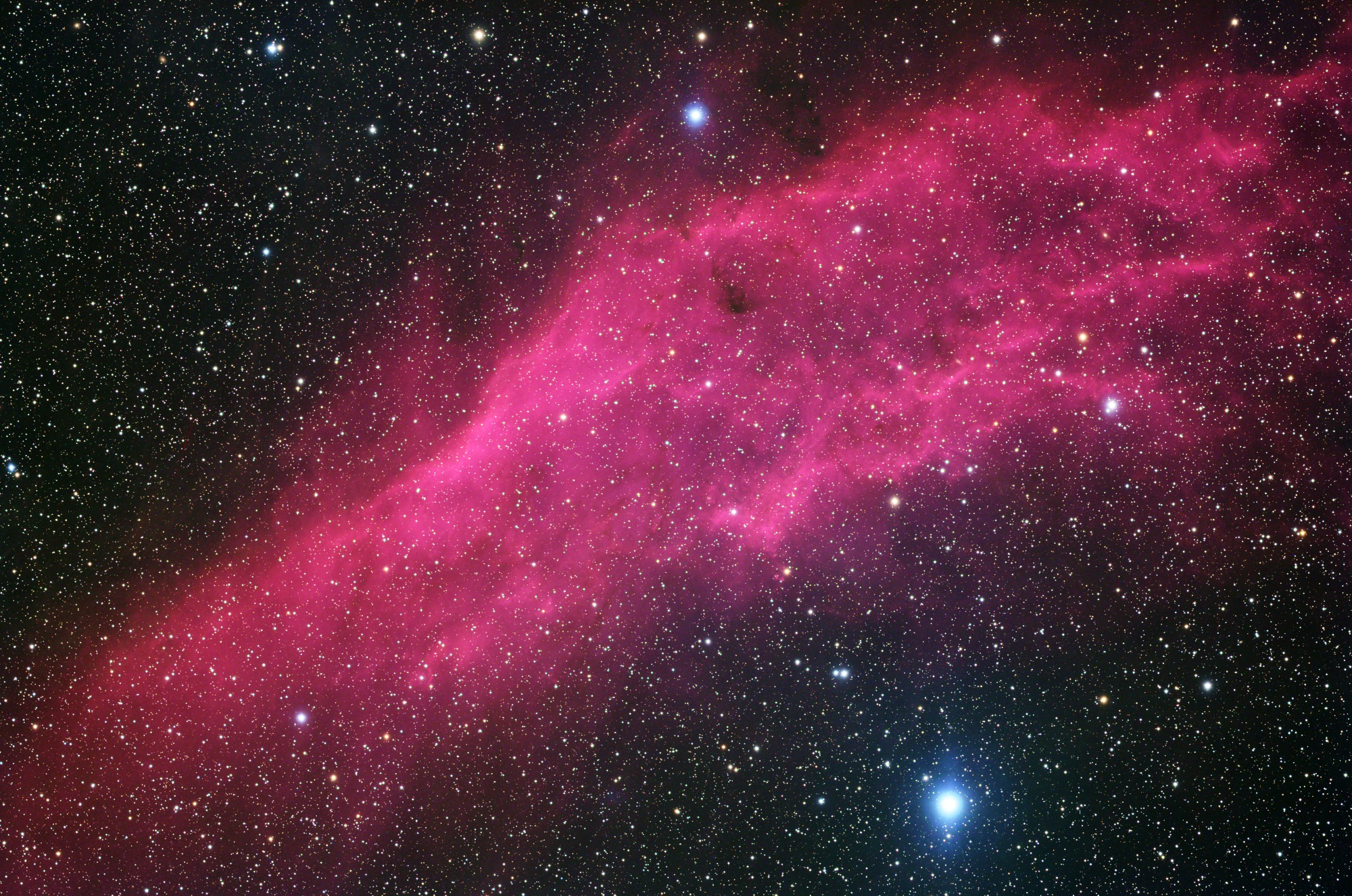
NGC 1499, the California Nebula, is a large but visually faint emission nebula in the constellation Perseus, which gets its name from its resemblance to the USA's most populous state. The California Nebula was discovered by E. E. Barnard in 1884-85.
Although nearly 2.5° across in photographs, the California Nebula has a very low surface brightness, which makes it disappointing and difficult to see visually. It is a faint rectangular patch, north of the 4th-magnitude star Xi Persei. Several streaks of low surface brightness cross the nebula.
An H-Beta filter is helpful when attempting to view NGC 1499 in a rich-field telescope under dark skies. Instead, this nebula is a great target for astrophotographers.
The California Nebula nebula lies some 1000 light years away, in the direction of the outer Orion arm of our galaxy. This entire region of space is filled with galactic gas from which many massive and luminous stars have formed. The glowing portion of the nebula is about 100 light years in extent.
NGC 1499 is probably illuminated by ξ Per. a hot blue-white main sequence star of spectral type O7e. This star belongs to the Perseus OB2 association, a group of young stars which probably arose from this interstellar cloud. The brightest star of Perseus OB2, ζ Per, is a B1 Ib white supergiant which shines at magnitude 2.83 some 0.6° south of the California Nebula. (Source: SS6Pro)
Although nearly 2.5° across in photographs, the California Nebula has a very low surface brightness, which makes it disappointing and difficult to see visually. It is a faint rectangular patch, north of the 4th-magnitude star Xi Persei. Several streaks of low surface brightness cross the nebula.
An H-Beta filter is helpful when attempting to view NGC 1499 in a rich-field telescope under dark skies. Instead, this nebula is a great target for astrophotographers.
The California Nebula nebula lies some 1000 light years away, in the direction of the outer Orion arm of our galaxy. This entire region of space is filled with galactic gas from which many massive and luminous stars have formed. The glowing portion of the nebula is about 100 light years in extent.
NGC 1499 is probably illuminated by ξ Per. a hot blue-white main sequence star of spectral type O7e. This star belongs to the Perseus OB2 association, a group of young stars which probably arose from this interstellar cloud. The brightest star of Perseus OB2, ζ Per, is a B1 Ib white supergiant which shines at magnitude 2.83 some 0.6° south of the California Nebula. (Source: SS6Pro)
Scope: Zeiss APQ 150/1200
Mount: AP-1200
Camera: FLI 11k @ -35°C
Mount: AP-1200
Camera: FLI 11k @ -35°C
